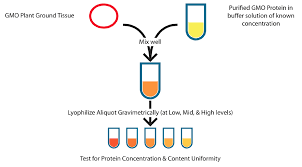ELISA is the most commonly employed bioanalytical assay to assess antigen-antibody interactions. Since its early use in the 1970s, ELISA assays have changed how bioanalytical and medical laboratories perform bioanalysis for molecules such as proteins, peptides, hormones, and antibodies. There are various versions of an ELISA assay depending on which it can detect antibody or antigen, identify the degree of an immune response, the type of immune response induced in the body, and much more. Such broad applications coupled with high robustness at a small price make ELISA assay the gold standard in biomedical analysis. Besides, immunoassay labs employ ELISA in toxicology, veterinary medicine, the food industry, etc.
Despite being in use for more than 50 years, several versions of ELISA assays are still developed to assist the development of new drugs. However, it is necessary to understand that such wide use of an assay depends on robust ELISA development and validation. Only when an ELISA is adequately developed, optimized, and validated can it empower scientists to conduct reliable bioanalysis. Hence, the current article shares why the ELISA method and validation are vital for bioanalysis.
Importance of ELISA method and validation
ELISA has several applications. Besides detecting antigens in biological samples, research today uses ELISA for determining phospholipids, polysaccharide antigens, and antibodies to denatured and native DNA. In fact, tests with protein-protein interactions are also called ELISA assays. Researchers develop and employ ELISA in different stages of drug development. But what is drug discovery and development? The primary goal of a drug discovery and development process is to identify novel therapeutic compounds and convert them into drug products for the benefit of a specific patient population.
ELISA generally measures antigens or antibodies in biological samples. Besides, direct and indirect ELISAs are mainly used for new drugs and vaccines. Moreover, sponsors develop specific ELISA assays to identify impurities generated during manufacturing . Identifying and limiting these impurities is critical to avoid adverse effects and unwanted reactions.
In ELISA development, it becomes crucial to obtain precise performance at every step of the assay protocol and ensure it is ready for use. For example, a newly developed assay must first prove to be precise, accurate, and reproducible. This can only be achieved with adequate standardization, optimization, and validation of ELISA assays. A validated assay ensures that the method generates reliable safety and efficacy data for drug products. Besides a full assay validation, sponsors can also perform partial validation for ELISA assays. Such changes are done for an already validated assay or when minor modifications are instated. The extent of partial validation depends on the nature and intended goal of the modification. However, sponsors must document and justify the need for revalidation or partial validation.
Conclusion
ELISA is a gold-standard technique for detecting and quantifying numerous biomolecules. The underlying antigen-antibody reaction transforms ELISA into different combinations and structures. Hence, ELISA lab must carefully develop, optimize and validate the assay to get inexpensive yet reliable analysis of biomedical molecules in general.
Hi! I am Shweta Dutta. I am a writer that enjoys creating beautiful blogs that complement unique and great work.

